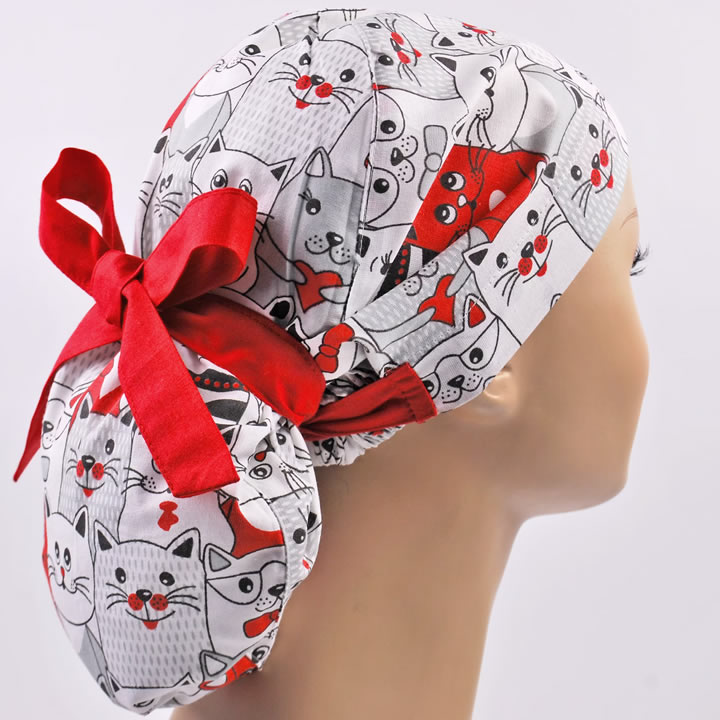Scrub caps are a new addition to the healthcare industry’s ever-changing wardrobe. They redefine fashion as well as functionality. Scrub caps have become an important addition to the uniforms of medical professionals.
These headcovers were originally designed to be practical. However, they have evolved into something more. They are a symbol of comfort, style, and versatility in the medical world. Explore the different styles, materials, and breathability of scrub caps.
Protective equipment has been a necessity for medical professionals to do their work. Scrub caps are a recent trend that has revolutionized how medical professionals dress. This article will explain scrub caps, their benefits, and the different types of scrub caps or hats.
What is a Scrub Cap?
Medical professionals wear scrub caps or surgical caps as part of their everyday work. Scrubs are not only used for protection, keeping hair off the face when performing operations. They can also be worn to show personality and express style.
Benefits: Comfort & Look
From their comfort to their stylish appearance, there are many reasons for the popularity of these hats. There are many other benefits as well.
These hats offer comfort, which is a major benefit. These hats are available in various fabrics, such as cotton and polyester blends, but they are still light to wear throughout the day. They stay in place during any activity without needing to constantly adjust them as with other headwear.
Scrub caps are more stylish than the standard “scrub” outfit.
Material: Breathable, lightweight
Comfort and functionality are key factors when choosing the right medical uniform. If you’re a medical professional looking for a lightweight, breathable scrub cap, a modern version of this classic headcover is the perfect choice.
Scrub caps today are designed for maximum comfort while offering protection from infection and other common contaminants. Medical staff who spend much time on their feet can benefit from wearing lightweight, breathable equipment.
Modern fabric technology allows manufacturers of scrub caps to create lightweight, moisture-wicking products that keep users cool during hot temperatures or following intense physical activity.
This material is also breathable, preventing sweat from seeping through to the skin of any healthcare worker.
Varieties of styles & colors
Scrubs are available in many colors, styles, and fabrics. They also come in different sizes, shapes, shades and cuts. This allows medical professionals to find the right fit while expressing their style.
Depending on their mood or occasion, they can also choose between solid colors and printed patterns.
The Best Medical Accessories for Professionals
Scrub caps are a popular choice for medical professionals all over the world.
They find them stylish, comfortable, and practical alternatives to traditional headwear. Scrub caps are becoming more popular among medical professionals due to their growing demand during medical procedures.
These fashionable hats are becoming more popular as people learn about their benefits.
Comfort and practicality are the main reasons for the trend towards scrub caps. Scrub caps are made of a lighter fabric than the typical hospital headgear. This makes them more comfortable for long hours at work.
Why do nurses wear scrubs?
We could joke about how nurses wear scrub caps because they are fashionable, but you won’t believe us. We’ll stick to the facts. Nurse hair covers are often a part of hospital uniforms because they serve the following purposes.
- Patient protection: Wearing a hair cap for nurses will prevent germs from spreading to patients. A scrub top is essential in a sterile room, such as an operating theatre.
- Your protection: Scrub caps have a double-sided effect; they protect you against picking up germs from patients.
- Visibility and comfort: Scrub caps are a great way to keep bangs or long hair out of the face. Having hair in the eyes or sweaty bangs on your forehead is not good.
What are the different types of scrub hats?
Who said scrub caps weren’t trendy? You can choose from a variety of styles. Although choosing a scrub cap is not as fun as buying a pair of jeans, having some fun and jazzing up your look at work can’t harm. Here are a few “hospital chic scrub-cap” varieties:
- Ponytail caps: The scrub cap has a hole on the back that you can use to thread your ponytail. These are great if you have long hair, but your job doesn’t require that you cover it with a cap.
- Pixie caps: You won’t be able to stuff long hair in these caps. The pixie cap is designed to be worn over short-cropped hair.
- Bouffant caps: This surgical hat may make you look like a chef or someone who just got out of the bath. After reading this description, we’re certain you will be able to imagine the style. These caps are perfect for those with thick hair.
- Disposable surgical cap: Don’t get attached to your caps if you are working in a particularly hazardous area. There may be better choices than fabric caps for professionals who work in areas with high levels of contagious disease because washing them can leave some germs behind.
- Headband for nurses: A headband is a great fashion accessory if you want to keep your hair out of your face but don’t require a sterile solution for your hair like a scrub cap.
Conclusion
As we conclude our investigation of scrub caps’ development, it becomes apparent that they have come far beyond their useful beginnings. In healthcare’s fast-paced world, where function and fashion play a part, scrub caps have proved themselves again.
Scrub caps have become an essential component of healthcare attire, reflecting dedication to patient care and comfort and self-expression within this demanding industry.
From their lightweight material and various designs, scrub caps now serve as an important statement piece, showing off the individual personalities and dedication of those wearing them.
As healthcare attire evolves, scrub caps remain an indispensable piece, representing commitment, comfort, and self-expression within this demanding realm of medicine.

